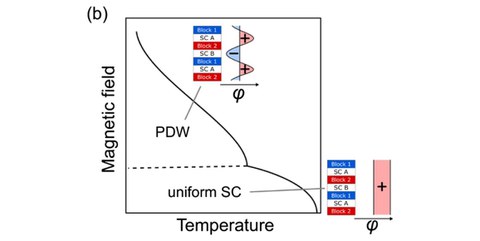26.04.2023
Research: Parity Transition of Spin-Singlet Superconductivity Using Sublattice Degrees of Freedom
The occurrence of two superconducting phases in magnetic field in the superconductor CeRh2As2 is a unique discovery. An attractive proposal is that the magnetic field induces a switch from an even-parity to an odd-parity superconducting state both of which are rooted in the locally non-centrosymmetric crystal structure. Here, parity refers to the relative sign of the superconducting gap function when going from one Ce layer to the next. Whether the superconducting gap function itself is singlet or triplet is an open question in this material, but solving this question would give crucial information on the superconducting pairing mechanism.
A group of researchers from Kyoto in Japan and Dresden in Germany, including a scientist from the SFB 1143, investigated the response of the electron susceptibility in the superconducting state via the Knight shift measured by nuclear magnetic resonance. A change of the Knight shift evidences singlet pairing. The main finding of this article in Physical Review Letters is that in both superconducting phases, the Knight shift decreases. This indicates that the field-induced state is an unique case of odd-parity spin-singlet superconductivity.
S. Ogata, S. Kitagawa, K. Kinjo, K. Ishida, M. Brando, E. Hassinger, C. Geibel, S. Khim,
Parity Transition of Spin-Singlet Superconductivity Using Sublattice Degrees of Freedom,
Phys. Rev. Lett. 130, 166001 (2023) (arXiv)

